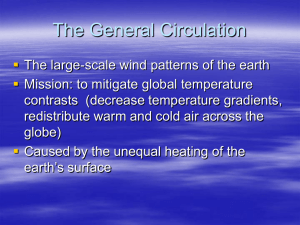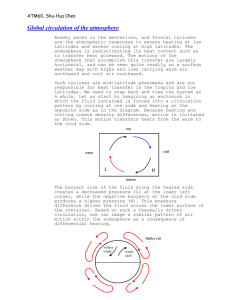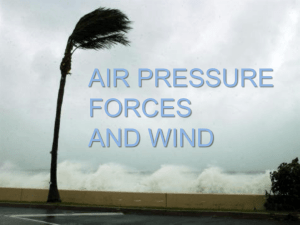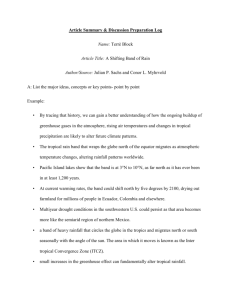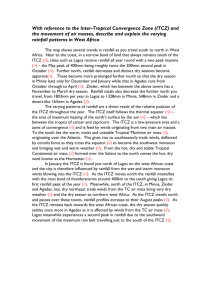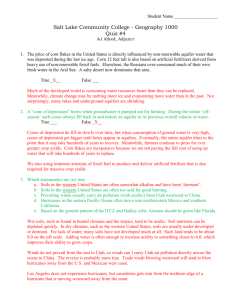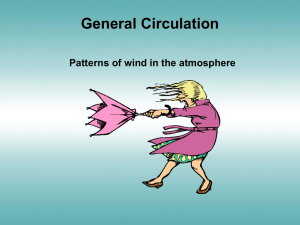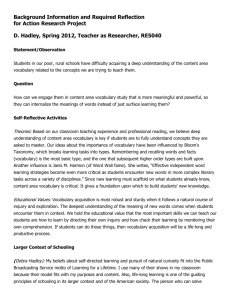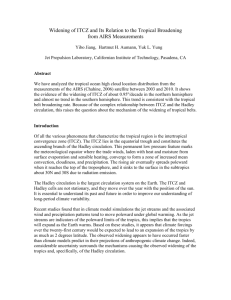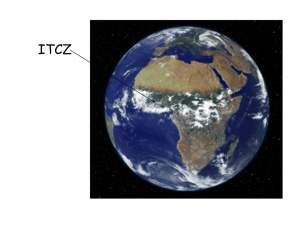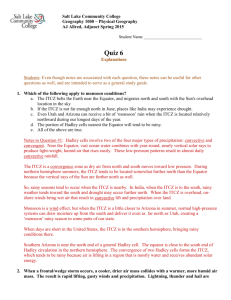Tropical to Sub-Tropical circulation
advertisement
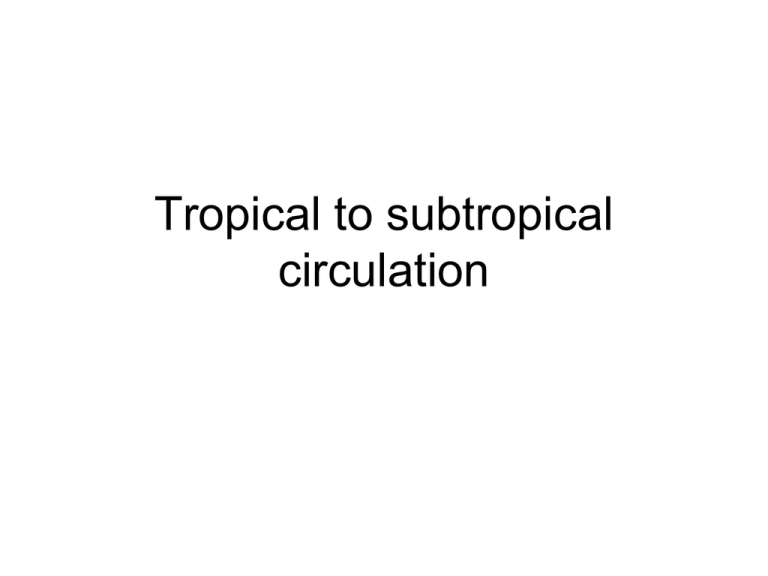
Tropical to subtropical circulation Major Zones • ITCZ (Intertropical convergence zone) • Subtropics (30 degrees, north/south hemisphere) • Front • Poles Hadley Cells • Giant tropical circulation pattern • Partially driven by convective processes along the ITCZ Hadley Cell Products • Heavy rainfall with in the ITCZ • Major transfer of energy from the ITCZ to higher latitudes – Sensible heat – Latent heat • Sets the stage for the dominant pressure cells in the Earth’s atmosphere Pressure Cells • ITCZ – Rising hot air – Creates zones of low pressure • Subtropics – Sinking dry air – Creates zones of High pressure Hadley Cell products continued • Subtropics: ↓ condensation and evaporation – Sahara dessert Subtropics feed into the Hadley cell • Warm dry air (trade winds, N & S) moves through the subtropics and towards the tropics picking water vapor. • These warm moist winds meet in the ITCZ and feed the Hadley cell. The Sun’s role • Provides energy to the Hadley cell • So, if the energy from the sun changes so does the strength of the Hadley cell and the location of the ITCZ – Summer, N (June-September), ITCZ shifts north – Summer, S (December-March), ITCZ shifts south Monsoons Monsoon circulation Atmospheric circulation at middle and high latitudes Atmospheric circulation at middle and high latitudes • The movement of air from mid to high latitudes • Areas above 35 degrees latitude • Air typically moves from areas of high pressure to areas of low pressure • Except…….. Effects on the land in mid latitudes • Low pressure cells tend to move fast in a west to east direction in the mid-latitudes • Sometimes these cells are forced to move over topographically high areas. – Orographic precipitation
